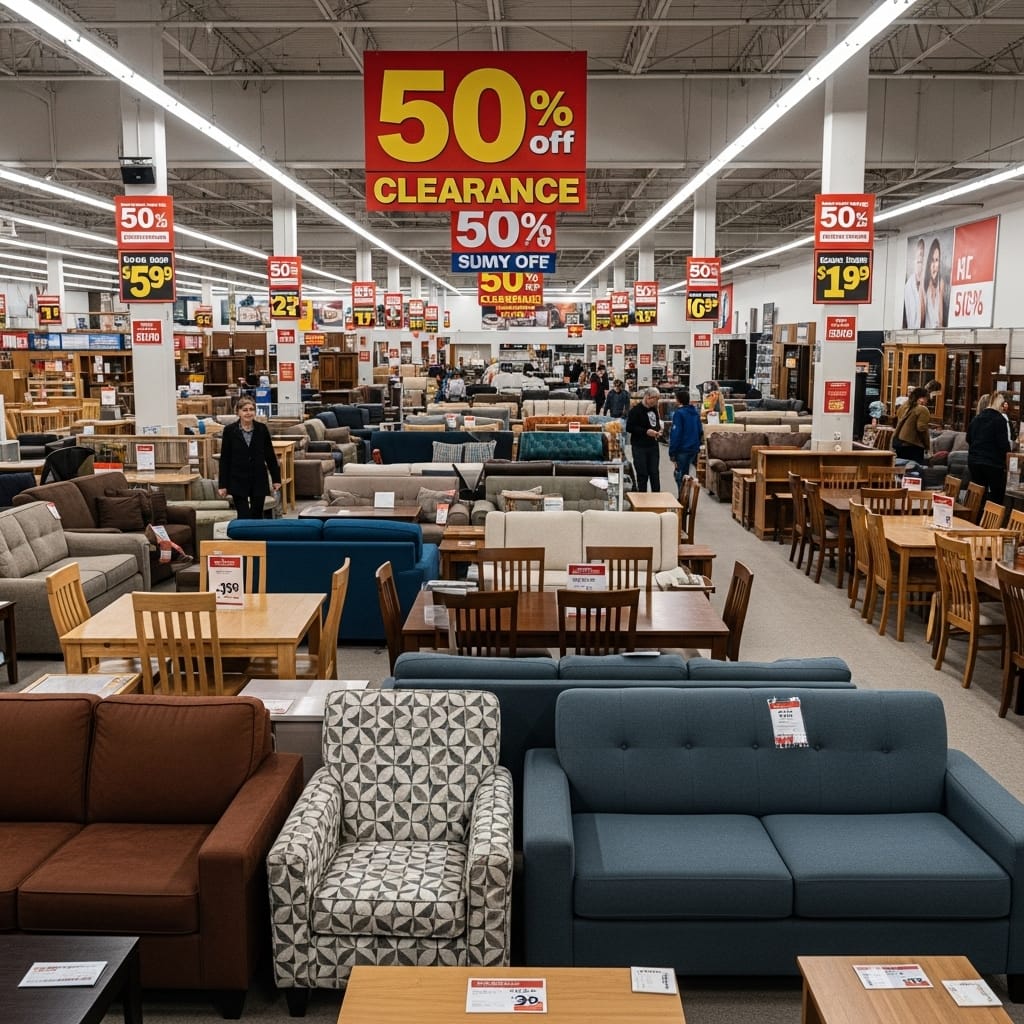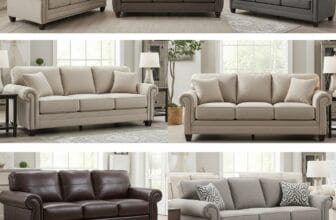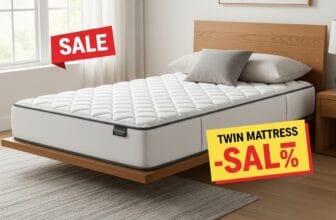
The Ultimate Guide to Discount Furniture Stores: Your Secret Weapon for a Stylish Home on a Budget
Let’s be honest: furnishing a home can feel like a financial marathon you didn’t sign up for. You scroll through pristine design blogs and curated social media feeds, falling in love with a plush sectional here and a solid wood dining table there, only to be jolted back to reality by a price tag with more zeros than you were prepared for. It’s a common frustration that leads many to believe that a beautiful, comfortable home is a luxury reserved for the few. But what if we told you there’s a thriving, parallel universe of furniture retail where style and savings coexist? Welcome to the wonderful world of discount furniture stores.
This isn’t about settling for less. It’s about shopping smarter. It’s for the savvy decorator, the first-time homeowner, the budget-conscious family, and anyone who loves the thrill of a great find. Forget the notion that “discount” automatically means “dumpy.” The landscape of affordable furniture is vast and varied, filled with hidden gems, incredible bargains, and quality pieces just waiting for a discerning eye. This guide will pull back the curtain, transforming you from a hesitant browser into a confident treasure hunter. We’ll explore the different types of discount stores, arm you with a professional’s inspection checklist, and share the insider secrets to help you furnish the home of your dreams without draining your bank account.
Beyond the Showroom Floor: Understanding the Types of Discount Furniture Havens
The term “discount furniture store” is a broad umbrella covering several distinct business models. Knowing the difference is the first step to targeting your search and managing your expectations. Each type offers unique advantages, a different shopping experience, and its own flavor of inventory.

Furniture Outlets: The Direct-from-the-Source Deal
Imagine the backroom of your favorite big-name furniture retailer. What happens to the floor models that have been gently sat on, the collections from last season, or the items that were slightly overproduced? They often end up at a furniture outlet. These stores are typically owned by and directly affiliated with a specific manufacturer or a large retail chain.
Here, you’ll find new, out-of-the-box items that are being cleared out to make way for new inventory. This can include discontinued styles, pieces with minor cosmetic blemishes that occurred during shipping, customer returns that are in perfect condition, and the aforementioned floor models. The discounts can be significant, often ranging from 30% to 70% off the original retail price. Shopping at an outlet is often the closest you can get to a traditional retail experience in the discount world, with organized showrooms and matching sets sometimes available.
Furniture Liquidators: The Treasure Hunter’s Paradise
If outlets are the organized backroom, liquidators are the exciting, unpredictable warehouse sale. Furniture liquidators acquire their inventory from a variety of sources, often in bulk. This could be the entire stock of a furniture store that’s going out of business, excess inventory from a hotel renovation, or a manufacturer’s entire canceled order.
The experience here is less curated and more of a hunt. You might find a high-end leather sofa next to a stack of budget-friendly dining chairs. The inventory is constantly changing and completely unpredictable, which is part of the appeal. If you see something you love, you have to act fast, because it likely won’t be there tomorrow. The deals can be astounding, as the liquidator’s primary goal is to move a high volume of product quickly. This is the place for those who love the thrill of discovery and aren’t afraid to dig for gold.
Consignment Shops: Where Pre-Loved Gets a Second Life
Consignment stores offer a more curated approach to secondhand furniture. They operate on a simple premise: individuals bring in their gently used, high-quality furniture, and the store sells it on their behalf, taking a percentage of the sale price. This model benefits everyone. The original owner makes some money back, the store gets inventory without upfront costs, and you, the shopper, get access to furniture that is often of a higher quality than what you’d find for the same price new.
These shops are fantastic for finding unique, vintage, and even antique pieces with character and history. Because the store owners are selective about what they accept, you can typically expect the items to be in good to excellent condition. This is the ideal spot to find that one-of-a-kind statement piece—a mid-century modern credenza or a classic wingback chair—that will set your home apart.
Scratch and Dent Stores: Embracing Imperfection for Big Savings
These stores are built on a simple, brilliant concept: perfection is expensive. They specialize in selling brand-new items that have sustained minor cosmetic damage somewhere along the supply chain. A small scratch on the leg of a coffee table, a ding on the back corner of a dresser, or a slight fabric pull on the underside of a sofa cushion—these are the kinds of imperfections that can slash a price in half.
For the practical shopper, this is a goldmine. The damage is often in an inconspicuous spot or so minor that it doesn’t detract from the overall look and function of the piece. You’re essentially getting a new, structurally sound piece of furniture for a used price, simply because you’re willing to overlook a small flaw that no one else will ever notice.
Online Discount Retailers: The Digital Frontier
The internet has revolutionized furniture shopping, and the discount market is no exception. Websites like Wayfair, Overstock, and Amazon have massive virtual inventories, offering endless choices at competitive prices. These retailers keep costs down by operating without physical showrooms. While the selection is unparalleled and the convenience is undeniable, there are trade-offs. You can’t physically inspect an item before buying, so you’re relying on customer reviews, photos, and product descriptions. Assembly is almost always required, and color representation on a screen can be tricky. However, for sheer variety and ease of Browse, these online giants are a powerful tool in the budget furnisher’s arsenal.
The Savvy Shopper’s Playbook: How to Find the Best Deals and Quality
Walking into a discount furniture store without a plan can be overwhelming. To navigate the aisles like a pro and walk away with a true bargain, you need to be prepared. This is about more than just looking at price tags; it’s about assessing value.
Master the Art of Inspection: Your Pre-Purchase Checklist
Never, ever buy a piece of furniture without giving it a thorough once-over. “As-is” is a common policy at many discount venues, meaning once you buy it, it’s yours. Use your senses—touch, sight, and even smell.
- For Wood Furniture (Tables, Dressers, Bookcases):
- Check the Material: Is it solid wood, veneer (a thin layer of real wood over a core of cheaper material), or laminate/particleboard? Solid wood is the most durable. An easy way to check is to see if the wood grain pattern on the top of a surface matches the pattern on the edge.
- Wiggle It: Grab the piece and give it a gentle shake. Does it feel sturdy, or does it wobble and sway? A wobbly table or chair leg is a major red flag for poor construction.
- Open Everything: Open all drawers and doors. Do they glide smoothly or do they stick and scrape? Check the drawer joints. Dovetail joints (interlocking pins) are a sign of quality craftsmanship, while staples and glue are signs of cheaper construction.
- For Upholstered Furniture (Sofas, Chairs):
- Feel the Frame: Press on the arms and back of the sofa. Does it feel solid and robust, or can you feel a flimsy, hollow frame? The frame should be made of kiln-dried hardwood, not particleboard or softwoods.
- Test the Springs: Remove the seat cushions and press down on the springs. They should push back firmly and evenly. S-shaped sinuous springs are common, but eight-way hand-tied springs are the gold standard of quality and durability.
- Check the Cushions and Fabric: Are the cushions firm and do they hold their shape? High-density foam is best. Look closely at the fabric for any rips, stains, or excessive pilling. Don’t forget to flip the cushions; sometimes damage is hidden on the other side.
Come Prepared for the Hunt
Your smartphone is your best friend. Before you even leave the house, have a clear idea of what you need and the maximum dimensions that will fit in your space. Create a note with these measurements. When you find a potential piece in the store, you can quickly reference it. Use your phone’s camera to take pictures of the item from all angles and to snap a photo of the tag with the price and any model numbers. This allows you to do a quick online search to compare prices and see what the item might have sold for at full retail.
Bring a tape measure. It seems obvious, but it’s the most commonly forgotten tool. Don’t trust your ability to “eyeball” it. Also, bring color and fabric swatches from other items in your room (like your rug or curtains) to ensure the new piece will coordinate.
Timing Can Be Everything
While the inventory at many discount stores is unpredictable, there are still some strategic times to shop. New inventory often arrives mid-week, so shopping on a Wednesday or Thursday might give you the first pick before the weekend crowds descend. Like traditional stores, many outlets have sales around major holidays like Memorial Day, Labor Day, and President’s Day. Additionally, try shopping near the end of the month, when some stores might be more willing to make a deal to meet their sales quotas.
Embracing the Journey: The True Value of Discount Shopping
Furnishing your home from discount stores is more than a cost-saving measure; it’s a creative endeavor. It’s about curating a space that reflects you, not a catalog. It requires a bit more patience and effort, but the payoff is immense. You’ll find pieces with more character, save a significant amount of money that can be used for other things, and have a home filled with items that each have a story.
It’s also a more sustainable way to shop. By purchasing a floor model, a discontinued item, or a pre-loved piece, you’re preventing that item from potentially ending up in a landfill. You’re participating in a circular economy that values longevity and reuse over the disposable culture of “fast furniture.”
So, the next time you feel discouraged by the high price of furnishing a home, remember the world of possibilities waiting for you in discount furniture stores. Arm yourself with knowledge, embrace the spirit of the treasure hunt, and get ready to build a beautiful, comfortable, and affordable home, one incredible find at a time.







